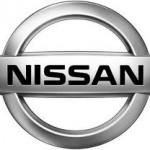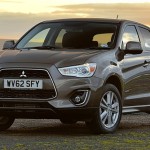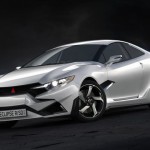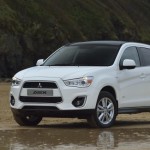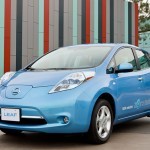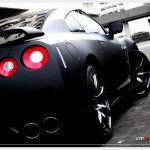Nissan and Mitsubishi are opposed to a new fast-charge plug standard adopted by the Society of Automotive Engineers this week, despite its backing by eight major automakers.
On Monday, the SAE — which developed and streamlined plug, outlet and charging-station specifications for current electric cars — released new specifications for a high-voltage “fast-charge” design that promises quick recharging in as little as 10 to 20 minutes.
In a statement provided to MSN, Nissan said it was “disappointed” that the SAE introduced a standard that “will not accommodate more than 70 percent of the electric vehicles on U.S. roadways today.” However, the automaker may be primed to change course, stating that it would “ensure that customers are provided with optimal charging technology and infrastructure.” In 2011, Nissan was the first major manufacturer in nearly a decade to sell a mass-produced, all-electric vehicle.
Until now, the only fast-charge plug standard has been CHAdeMO, a Japanese design that has been used in small numbers for the past several years in Japan, Europe and the U.S. Nissan and Mitsubishi are the only manufacturers to offer the CHAdeMO plug as standard on their electric vehicles, the Leaf and i-MiEV; no other major EV manufacturer offers it.
Current charging standards, known as Level 1 (110/120 volt) and Level 2 (220/240 volt), have spread across the entire industry, save for Tesla, which continues to develop its own proprietary designs. The new SAE standard will introduce what is known as Level 3, with capacity for up to 500 volts of direct-current charge. The latest plug is compatible with all charging levels and can be equipped with Wi-Fi communication as utilities begin to install smart electrical grids.
Most automakers have been reluctant to use CHAdeMO since a worldwide standard was not in place and its effects on battery life were largely unknown. Audi, BMW, Chrysler, Daimler, Ford, General Motors, Porsche and Volkswagenhave all agreed to adopt the new SAE plug standard as early as 2013 for U.S., European and other markets around the world. None has agreed to use the Japanese standard, which requires automakers to install a second, dedicated port alongside the current lower-voltage SAE standard (see photo, at right).
Mitsubishi said in a statement that it “reiterates its support of the CHAdeMO protocol,” which it said had “long been established as the de facto means of DC quick charging.”
“As of the beginning of October 2012, there were a total of 1,659 DC quick chargers deployed throughout the United States, Europe, Russia and Asia utilizing the CHAdeMO protocol,” the automaker said.
According to the SAE, an electric vehicle with a 25-kilowatt-hour battery can be recharged from 20 percent to 80 percent of its capacity in just 20 minutes. A plug-in hybrid could go from dead to 80 percent in as little as 10 minutes. However, these times assume continuous 200-amp service, a huge draw in power that is as large as the maximum draw of most American homes. Fast charging also creates greater heat, which can stress a battery pack and cause it to fail. Many automakers, including Ford, say they are developing special software to monitor the battery’s condition during a fast charge.

